MercoPress. South Atlantic News Agency
Tag: squid
-
Wednesday, September 17th 2025 - 19:52 UTC
New study links squid abundance around Falklands to ocean conditions
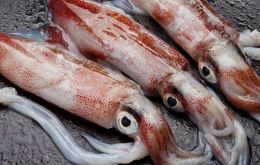
A new study has developed an innovative model to forecast the abundance of Argentine shortfin squid (Illex argentinus) in the Falkland Islands region, highlighting how environmental variability drives key fluctuations in this vital resource.
-
Thursday, May 15th 2025 - 10:11 UTC
The cephalopods market faces tight supply and rising prices, FAO report

The global cephalopods market is under increasing strain as tight supply continues in early 2025. Reduced landings in key producing regions, adverse weather, and extra tariff barriers are contributing to upward pressure on cephalopod prices across major international markets, reports FAO’s Mohamed Hammi.
-
Thursday, February 15th 2024 - 12:24 UTC
Illex Squid: correlation between abundance and sea surface temperatures; Taiwanese experience 1998/2018
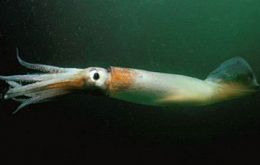
ScienceDirect (*) site has published a most interesting study on fishing trends, particularly on the Illex Argentines in the Southwest Atlantic, based on squid catches calculated from daily logbooks recorded by the Taiwanese squid-jigging vessels from 1998 to 2018 across the open sea east of Argentina and north of the exclusive economic zones of the Falkland Islands in the Southwest Atlantic, which was a quality-controlled compilation of regional fisheries data.
-
Tuesday, January 30th 2024 - 10:31 UTC
Squid is becoming “too expensive” in Korea because of lesser catch volumes

Korean media is pointing out the fact that squid, once considered the “people's side fish”, given its affordability, is now an expensive dish, and has offered some market prices in South Korean Won, which exchanges at 1,330 SKW to the US dollar.
-
Thursday, February 16th 2023 - 20:54 UTC
Ecuador and Peru fighting a losing battle with China on giant squid fishing in the southeast Pacific

Giant squid, squid or Dosidicus gigas, measures up to 3 meters in length and can reach 50 kilos in weight. It is one of the main species of the southeastern Pacific Ocean and at the same time it is one of the species with the greatest commercial pressure in the world. Thousands of tons are extracted every month, a large part, from the international waters located off the seas of Ecuador, Peru and Chile. The main player behind that voracious appetite is China: it has a declared fleet of 671 ships.
-
Monday, December 19th 2022 - 10:30 UTC
Strong reaction from Argentine squid industry against some Patagonia ports willing to service Chinese fleet
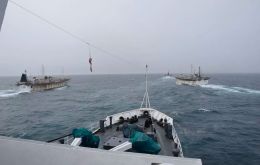
A strong reaction from the Argentine squid industry following news published in Buenos Aires media indicated some Patagonian port were considering, and could be prepared to service the Chinese jigger fleet operating in mile 201 of the Argentine EEZ.
-
Monday, September 5th 2022 - 09:47 UTC
Argentina's eight month fisheries landings down 29%; squid the bright spot
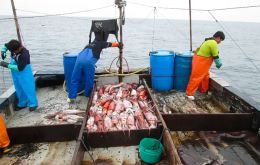
Argentina has released primary figures of fisheries landings in the first eight months of the year, (Jan/August 31) which show a significant overall drop compared to a year ago, 564,685.6 tons and 796,813.1, that is 29,13% less. However squid has done very well, hake hubbis landings also increased while shrimp and croaker the most common species experienced a considerable fall.
-
Thursday, September 23rd 2021 - 09:05 UTC
Falklands government defines Illex fishing and transhipment licences in 2022

At the final Executive Council meeting of the Legislative Assembly, elected members considered and approved recommendations concerning Illex fishing and transhipment licenses for 2022.
-
Saturday, July 3rd 2021 - 07:40 UTC
China launches three month squid fishing moratorium in South West Atlantic, official release
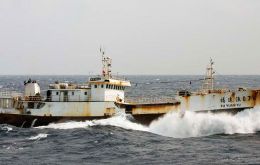
China officially launches its voluntary fishing moratorium on the high seas from July this year to preserve squid resources in open waters, according to a resolution from the Ministry of Agriculture and Rural Affairs on June 28 and reported by the Xinhua news agency.
-
Friday, June 4th 2021 - 09:17 UTC
Baby squid sent to the Space Station for scientific experiments

A resupply mission has reached the International Space Station (ISS) with fresh supplies for the astronauts, including new solar arrays and...for the first time ever two batches of tiny squids for a scientific experiment.
